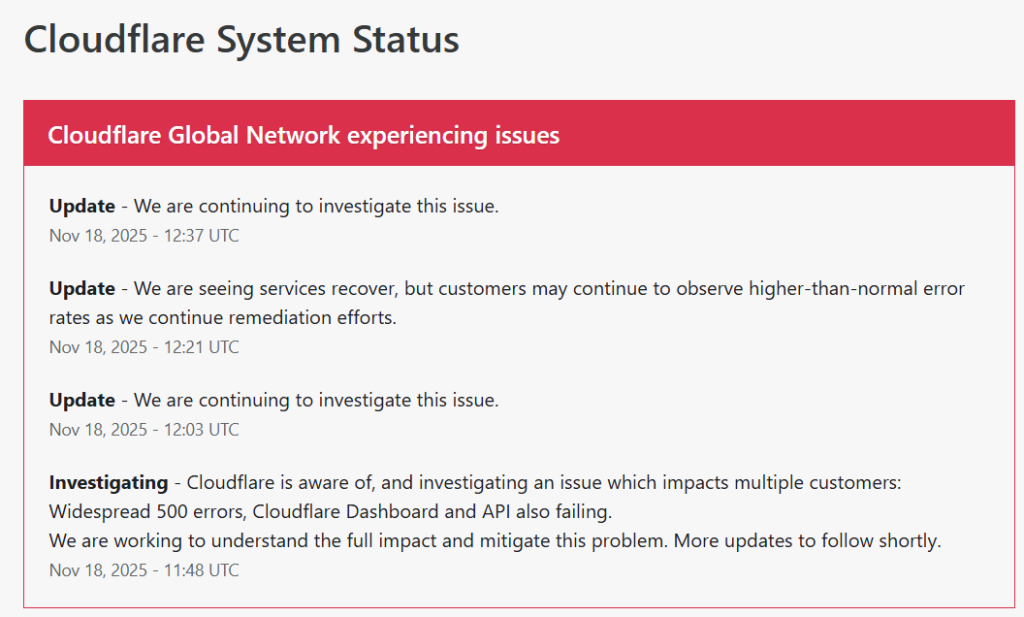A widespread Cloudflare outage triggered massive disruptions across the internet today, briefly taking down thousands of websites and online services that rely on the company’s infrastructure. The outage, which lasted several minutes but created ripple effects for nearly an hour, left users around the world unable to access platforms they use daily from ecommerce stores and media sites to productivity tools and gaming services.
How the Outage Started
A disruption began when Cloudflare’s systems experienced an unexpected failure within its core network, causing errors such as “500 Internal Server Error” and “502 Bad Gateway” across affected sites. As one of the internet’s largest content delivery and security networks, Cloudflare acts as a crucial layer between websites and users. When its backbone falters, the impact is immediate and far-reaching, which is exactly what unfolded during the outage.

Global Impact of the Disruption
Users across multiple regions, including North America, Europe, Asia, and the Middle East, reported widespread access issues.
Regional Effects
In countries where Cloudflare-backed websites dominate local digital ecosystems, major news portals, ecommerce stores, government websites, online banking systems, ticketing sites, and even gaming services were suddenly unreachable. Social media platforms quickly filled with user complaints, demonstrating how deeply Cloudflare is integrated into daily internet operations.
Cloudflare’s Official Response
Cloudflare confirmed the outage shortly after issues began and clarified that the problem stemmed from an internal network configuration error rather than a cyberattack.
Rapid Rollback and Stabilization
The company stated that its engineering teams moved quickly to roll back the faulty changes and restore traffic across its global data centers. Services began stabilizing soon after, and Cloudflare issued a public apology acknowledging the scale of the impact.
Industry Concerns and Infrastructure Fragility
Reliance on Centralized Providers
Industry analysts highlighted that despite Cloudflare’s strong reliability record, the incident exposes the vulnerabilities of the internet’s centralized infrastructure. With the majority of global websites depending on a few backbone providers for caching, cybersecurity, and content delivery, a single point of failure can ripple across the web within seconds.
Renewed Debate on Internet Resilience
The outage reignited discussions about decentralization and resilience, with experts questioning whether the internet has become overly dependent on too few infrastructure providers. Incidents like today’s raise concerns about how prepared the digital ecosystem is for future disruptions.
Next Steps From Cloudflare
Cloudflare announced that it is conducting a detailed internal review to prevent similar incidents in the future.
Post-Incident Report Incoming
The company plans to publish a full post-mortem outlining the root cause, the sequence of events, and the technical measures it will implement to strengthen network stability. Meanwhile, businesses affected by the downtime are assessing losses related to traffic drops, interrupted transactions, and user experience issues.
Conclusion
Today’s Cloudflare outage serves as a powerful reminder that even the most robust infrastructure providers can face sudden technical failures — and when one does, the effects are felt instantly across the globe. As Cloudflare works to reinforce its systems, the incident underscores the need for greater resilience in the internet’s core architecture.





